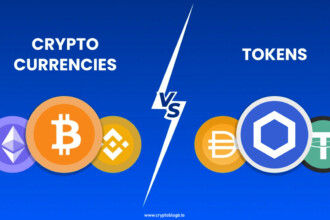He created a $6 billion cryptocurrency in his spare time, cashed out during the biggest bull run in history, and never left the game. No flashy promises. No billionaire tweets. Just code, vision, and staying power.
Meet Charlie Lee — the brain behind Litecoin, the crypto world’s “silver” to Bitcoin’s “gold” and one of the most fascinating figures in the digital money revolution.
The man who gave crypto its silver deserves more hype
He never shouted from rooftops. Never positioned himself as a crypto messiah. Yet, while others chased hype and headlines, Charlie Lee quietly created Litecoin — a coin that has outlasted trends, crashes, and countless imitators.
On April 13, the day most sources cite as his birthday, the crypto community celebrates not just the man but the movement he helped build.
Because Charlie Lee didn’t just create another altcoin. He created a legacy.
Born across continents, raised to build
Charlie Lee was born in 1977 in the Ivory Coast, where his Chinese parents had settled after moving there in the ’70s. At 13, he and his family made a big move to the U.S., eventually calling Boston home.
By 1995, Charlie had finished school at the elite Lawrenceville School in New Jersey. Not long after, he knocked out both his bachelor’s and master’s degrees in computer science from MIT — wrapping it all up by 2000, as per Wikipedia.
And he wasn’t the only one in the family chasing tech innovation. His father was also an MIT graduate, and his brother Bobby Lee would go on to found BTCC — one of China’s first major crypto exchanges. In short, the Lee household wasn’t just tech-savvy. It was future-ready.
From Google engineer to crypto convert
Before becoming one of the most respected names in crypto, Lee was just another engineer climbing the ranks in Silicon Valley.
While Charlie Lee isn’t an astronaut, he’s no stranger to cutting-edge tech. Charlie started with an internship at Kana Communications, helping build email systems. With dual degrees from MIT in computer science and electrical engineering, tech wasn’t just his career path — it was something he genuinely enjoyed.
He cut his teeth at KANA Communications and Guidewire Software before landing at Google in 2007. There, he worked on some of the company’s biggest products — YouTube Mobile, Chrome OS, and Play Games.
But in 2011, something changed.
Lee stumbled upon an article about Silk Road, the now-infamous dark web marketplace that accepted only Bitcoin. That moment sparked something.
The idea of decentralized, censorship-resistant money aligned with his skepticism of centralized financial systems like the Federal Reserve.
He’d already dabbled in gold as an investment. But Bitcoin offered something more powerful: programmable money, free from borders and banks. The future was here, and Lee wanted in.
First steps: A failed launch that taught him everything
Lee’s first crypto project, Fairbix, launched in 2011. It was a clone of an obscure altcoin called Tenebrix — but it flopped hard.
The bug in the mining code for Fairbix didn’t make the network unusable. It just made it so that the number of coins mined is less than expected. There were other bugs because the code was based on a different codebase than Bitcoin.
Charlie Lee exclusively quoted to Crypto Blogs;
He also added, “With Litecoin, I made sure to fork from Bitcoin, so the code is much more stable.”
Most people would’ve given up. But Lee didn’t. Instead, he took the failure as a learning moment. He studied Bitcoin’s open-source codebase, thought deeply about what it lacked, and began building something better — not a replacement, but a complement.
Then came Litecoin: Bitcoin’s faster, cheaper sibling
What is Litecoin?
In 2011, Charlie Lee created Litecoin, a digital currency designed to be faster and more practical than Bitcoin, to make it simple for people to use cryptocurrency for everyday buying and selling, not just for holding onto as a long-term investment. He called it the “silver to Bitcoin’s gold.”
How does Litecoin work?
Litecoin runs on a public record system called a blockchain. Just like Bitcoin, it uses miners to confirm transactions. But instead of the heavier SHA-256 algorithm, it uses something simpler called Scrypt.
That choice made it easier for average users to get involved without needing high-end computers. The goal from the start? Keep it fast, fair, and easy to access.
How is the Scrypt algorithm different from SHA-256?
Scrypt and SHA-256 are both used in crypto mining, but Scrypt is more memory-heavy. That means it’s harder for big machines (like ASICs) to take over. SHA-256, on the other hand, relies more on raw processing power, making it easier for powerful rigs to dominate.
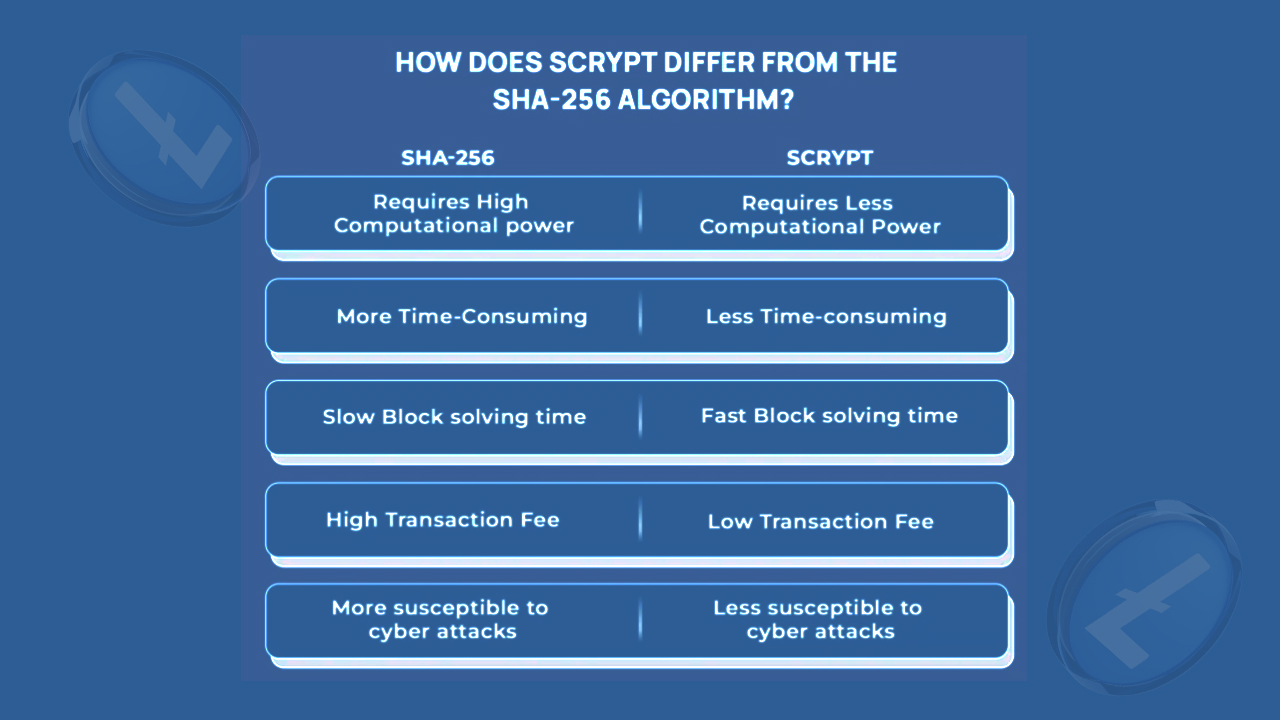
Why 84 million coins?
The larger supply makes Litecoin better suited for everyday use. It’s enough to keep things running without making the coin too rare to spend. Think of it as a way to keep it usable without losing value.
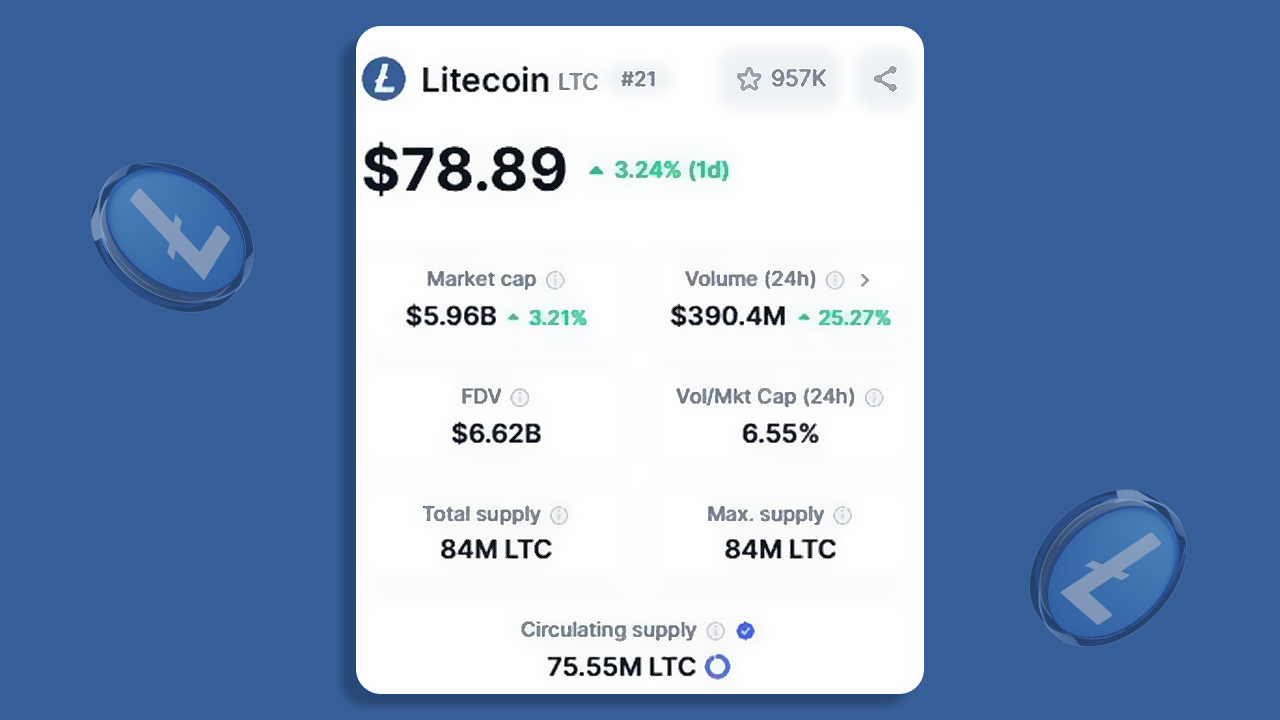
Litecoin’s Halving
Litecoin cuts its mining rewards in half every few years — that’s called a halving. It doesn’t happen on the same dates as Bitcoin because Litecoin came out two years later and mines blocks faster.
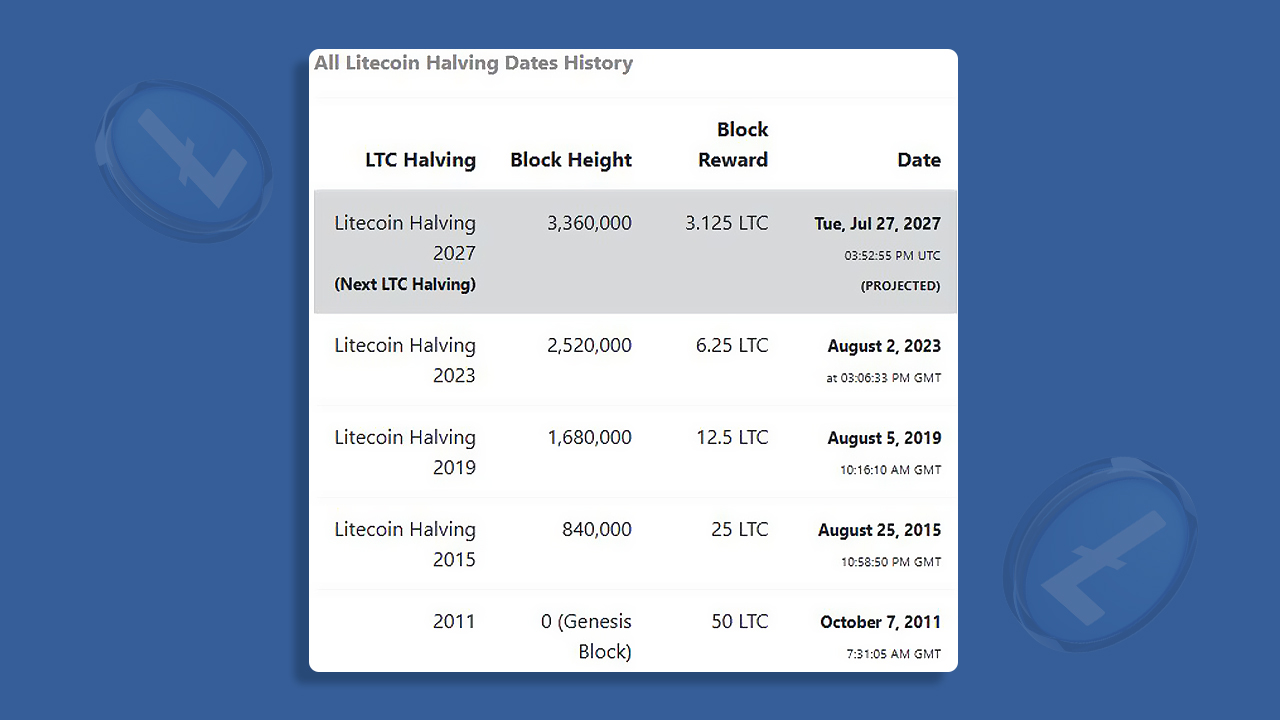
Here’s how it has gone so far:
- 2015: 50 → 25 LTC
- 2019: 25 → 12.5 LTC
- 2023: 12.5 → 6.25 LTC
- Next one? Around mid-2027: 6.25 → 3.125 LTC
That’s it. Less coins over time lead to more scarcity & part of why people care about halvings.
Also Read: Litecoin Halving: Detailed Explanation
Charlie Lee and the early days
Charlie later joined Coinbase and helped shape how millions of people got into crypto. While working there, Litecoin continued to grow quietly. It didn’t rely on hype — it just did what it was made to do, and that was enough for people to trust it.
At the same time, Litecoin continued to grow. It became one of the few altcoins listed on major exchanges and supported by wallets. But in 2017, Lee made a bold call: he left Coinbase to focus full-time on Litecoin and the Litecoin Foundation.
That same year, he did something even more shocking — he sold nearly all of his personal Litecoin holdings.
Selling his Litecoin: A move that shocked everyone
Lee’s decision to sell his Litecoin in late 2017, just as the market was booming, raised eyebrows. But his reason was clear — he didn’t want to be accused of pumping a coin he personally held. He didn’t want financial incentives to cloud his judgment as Litecoin’s most visible advocate.
It was controversial. Some called it smart. Others called it betrayal. But looking back, it was classic Charlie Lee — low-key, logical, and guided by principle rather than profit.
The Mystery around Charlie Lee’s birthdate adds to the Legend
Here’s something you won’t find with most crypto founders: we still don’t know Litecoin creator Charlie Lee’s exact birthdate. While 1977 is widely accepted as his birth year, sources have thrown out multiple dates — January 5, some say. Others claim September.
But the most frequently cited — across Grok, DeepSeek, and AI models — is April 13. It’s the date the majority now go with. And while Lee himself has stayed quiet on confirming it, the crypto world celebrates him.
It feels fitting — a subtle nod to the pseudonymous spirit of crypto itself. Like Bitcoin’s own Satoshi Nakamoto, Lee has kept parts of his personal life private, letting the work speak instead.
The side of Charlie Lee that most people never see
While most know him as the creator of Litecoin, there’s a whole other side to Charlie Lee—stuff that rarely makes headlines but tells you a lot about the man behind one of crypto’s most resilient coins.
- He was mining Bitcoin before it went mainstream. Back when BTC was around $10, Lee was already running mining rigs at home, driven purely by curiosity.
- The first Litecoin block was mined on a MacBook. No multimillion-dollar ICOs — just one laptop and a GitHub push.
- He sold all his LTC — not for a payday, but for principles. He wanted to speak freely about the coin without any accusations of conflict.
- His Github dev alias? @coblee. Charlie Lee goes by @coblee on GitHub—a mix of “Charlie” and “Lee”—where he still actively contributes to Litecoin’s codebase behind the scenes.
- He Was an Early Contributor on Bitcointalk. Long before Litecoin, Charlie Lee was already active on Bitcointalk, where he hinted at building a better, faster Bitcoin—planting the early seeds of what would become Litecoin.
A decade of delivering real impact
Under Lee’s leadership, Litecoin has quietly stacked up serious wins:
| Years | Development | Description |
| 2011 | Birth of Litecoin | Oct 7: Charlie Lee releases Litecoin on GitHub, calling it the “silver to Bitcoin’s gold.” Oct 13: Litecoin network goes live with faster block times, 84M supply cap, and Scrypt mining. |
| 2013 | $1 Billion Breakthrough | Litecoin’s market cap shoots past $1B during a late-2013 bull run. |
| 2014 | Merge Mining with Dogecoin | Dogecoin begins merge-mining with Litecoin, improving security for both chains. |
| 2017 | Big Tech Upgrades | May: Litecoin becomes first major coin to activate SegWit, slashing fees and speeding up transactions. September: Executes successful atomic swaps with Bitcoin, Vertcoin, and Decred—no middlemen needed. |
| 2022 | Privacy Gets a Boost | May: MWEB (MimbleWimble Extension Block) goes live—adds optional transaction confidentiality. |
| 2024 | Core Upgrade & Security Enhancements | March: New core update improves network security and adds PSBT support for better wallet compatibility. |
| 2024 | Pilot smart contracts | Litecoin begins testing smart contract functionality—bringing dApps to its ecosystem. |
| 2025 (So Far) | Regulatory Momentum & ETP Listings | Grayscale, CoinShares, and Canary Capital file for a Litecoin spot ETF. Bloomberg analysts predict a 90% chance of approval by September. Litecoin ETPs are now listed on SIX (Switzerland), Xetra (Germany), and Euronext. Regulatory clarity in EU, South Korea, and several U.S. states — Litecoin officially recognized as a non-security. Merchant acceptance grows to over 2,500 globally — up from 2,000 in 2024. Developer and user community remains strong through market cycles. |
How is it different from Bitcoin?
- Speed: Litecoin processes transactions in around 2.5 minutes. Bitcoin takes 10.
- Supply: Litecoin has a total cap of 84 million coins; Bitcoin stops at 21 million.
- Mining: Litecoin’s Scrypt system needs less power, making it easier to mine on regular hardware.
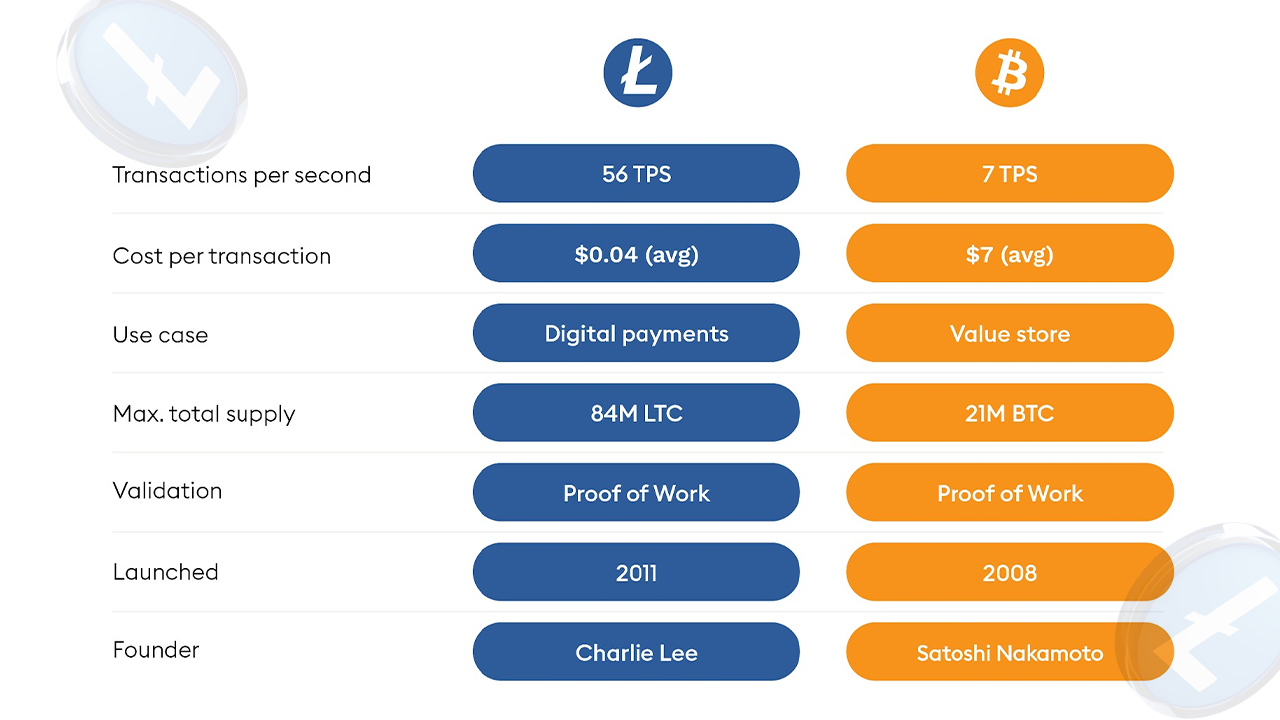
Why is Litecoin gaining hype?
It avoided the pitfalls of many altcoins by consistently improving. It added privacy via MimbleWimble, enabled peer-to-peer swaps, and gained ETP status in Europe. ETF talks and clearer regulations are driving interest.
A thought leader who never needed a mic
Lee doesn’t tweet hot takes or chase trends. But when he speaks, the community listens. With over 1.2 million followers on X, he’s respected not just as a founder but as a voice of reason in a chaotic space.
In a 2019 conference speech, he laid out what makes a strong altcoin: no pre-mining, fair launch, miner engagement, strong branding, and most importantly — a purpose that complements Bitcoin. Litecoin ticks all those boxes.
Beyond the charts and code
Charlie Lee has always said Litecoin isn’t meant to replace Bitcoin — it’s meant to work alongside it. While others tried to be the next big thing, Lee focused on making something useful. Something sustainable. And in doing so, he created a coin that’s not just surviving — it’s evolving.
His work isn’t driven by ego or hype. It’s driven by belief. A belief that decentralized, sound money should be available to all. And a belief that if you build something with integrity, it’ll last.
Celebrating a builder who built
On April 13, the crypto community celebrates Charlie Lee — a builder who didn’t just drop whitepapers or chase token launches. He shipped. Scaled. Stayed.
In a space full of noise, he stayed quiet. In a space full of short-term plays, he played the long game.
Happy birthday, Charlie. Thanks for giving crypto its silver and for showing the world that the real builders don’t need to shout.
Also Read: How To Buy Litecoin: A Step By Step Guide















